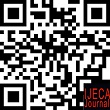Development of E-Modules Based on Exe-Learning on Topics of Reaction Rate Against Student Learning Outcomes Mechanical Engineering
Abstract
Keywords
Full Text:
Download [PDF]References
Brog, W. . and G. (1983). Educational Research and Introduction. Longma Inc.
Effendy. (2016). Ilmu Kimia untuk Siswa SMA dan MA (I. A. Publishing (ed.)).
Hamdani. (2011). Strategi Belajar Mengajar. PT Pustaka Setia.
Riduwan, S. (2011). Pengantar Statistika Untuk Penelitian Pendidikan Sosial,Ekonomi, Komunikasi, dan Bisnis (4th ed.). Alfabeta.
Azizah, S., Khuzaemah, E., & Rosdiana, I. (2017). Penggunaan Media Internet eXe-Learning Berbasis Masalah pada Materi Perubahan Lingkungan untuk Meningkatkan Hasil Belajar Siswa dalam kehidupan sehari-harinya dan juga psikomotor ( keterampilan ) siswa . Proses belajar dapat materi dan bahan belajar yang. Scientiae Educatia: Jurnal Pendidikan Sains, 2005, 197–213. https://doi.org/DOI: http://dx.doi.org/10.24235/sc.educatia.v6i2.1957
Copriady, J. (2014). Penerapan SPBM yang Diintegrasikan dengan Program Exe Learning Terhadap Motivasi Hasil Belajar Mahasiswa Pada Mata Kuliah Kimia Dasar. Jurnal Pendidikan, 5(2), 95–105.
Federal, U., Preto, D. O., Federal, U., & Preto, D. O. (2012). Choosing a virtual learning environment to support classroom teaching at institute of exact and applied sciences (Issue January).
Jahro, S., & Ridho, D. (2015). Penerapan Model Problem Based Learning Menggunakan Media Exe Learning untuk Meningkatkan Hasil Belajar dan Kerjasama Siswa Pada Materi Hidrokarbon. 7(3), 80–86.
Nurdin, S., & Setiawan, W. (2016). Improving Students Cognitive Abilities And Creative Thinking Skills On Temperature And Heat Concepts Through An Exelearning-Assisted Problem Based Learning. International Journal of Scientific & Technology Research, 5(12), 59–63.
Ratmini, W. S. (2017). The Implementation of Chemistry Practicum at SMA Laboratorium Undiksha Singaraja in the School Year 2016 / 2017. 6(2), 242–254. https://doi.org/10.23887/jpi-undiksha.v6i2.11881
Riduwan, S. (2011). Pengantar Statistika Untuk Penelitian Pendidikan Sosial,Ekonomi, Komunikasi, dan Bisnis (4th ed.). Alfabeta.
Samsudduha, Masugiono, & Supraptono. (2013). Automotive Science and Education Journal. Automotive Science and Education Journal, 2(2), 63–70.
Science, S., Conference, I., Training, T., Program, D., Education, E., & Email, I. (2017). Advances in Social Science, Education and Humanities Research (ASSEHR), volume 158 International Conference on Teacher Training and Education 2017 (ICTTE 2017). 158(Ictte), 445–456.
Teknologi, P., Dalam, I., & Kimia, P. (2010). PEMANFAATAN PROGRAM APLIKASI eXe ( E LEARNING XHTML EDITOR ). 2009, 91–95.
Uli, M., Siboro, O., Tarigan, S., & Suyanti, R. D. (2017). The Effect Of Learning Model Using Exe-Learning Media And Learning Motivation To Chemistry Learning Outcomes On Students SMAN 1 Batang Kuis. 7(5), 13–17. https://doi.org/10.9790/7388-0705021317
Wiyarsi, A., Fachriyah, A. R., Supriadi, D., & Bin Muhamad Damanhuri, M. I. (2019). A test of analytical thinking and chemical representation ability on ‘rate of reaction’ topic. Cakrawala Pendidikan, 38(2), 228–242. https://doi.org/10.21831/cp.v38i2.23062
DOI: https://doi.org/10.31764/ijeca.v3i2.2672
Refbacks
- There are currently no refbacks.
Copyright (c) 2020 IJECA (International Journal of Education and Curriculum Application)

This work is licensed under a Creative Commons Attribution-ShareAlike 4.0 International License.
IJECA (International Journal of Education and Curriculum Application) already indexed:










___________________________________________________________________
| |
____________________________________________________________________
IJECA Publisher Office:







.jpg)




